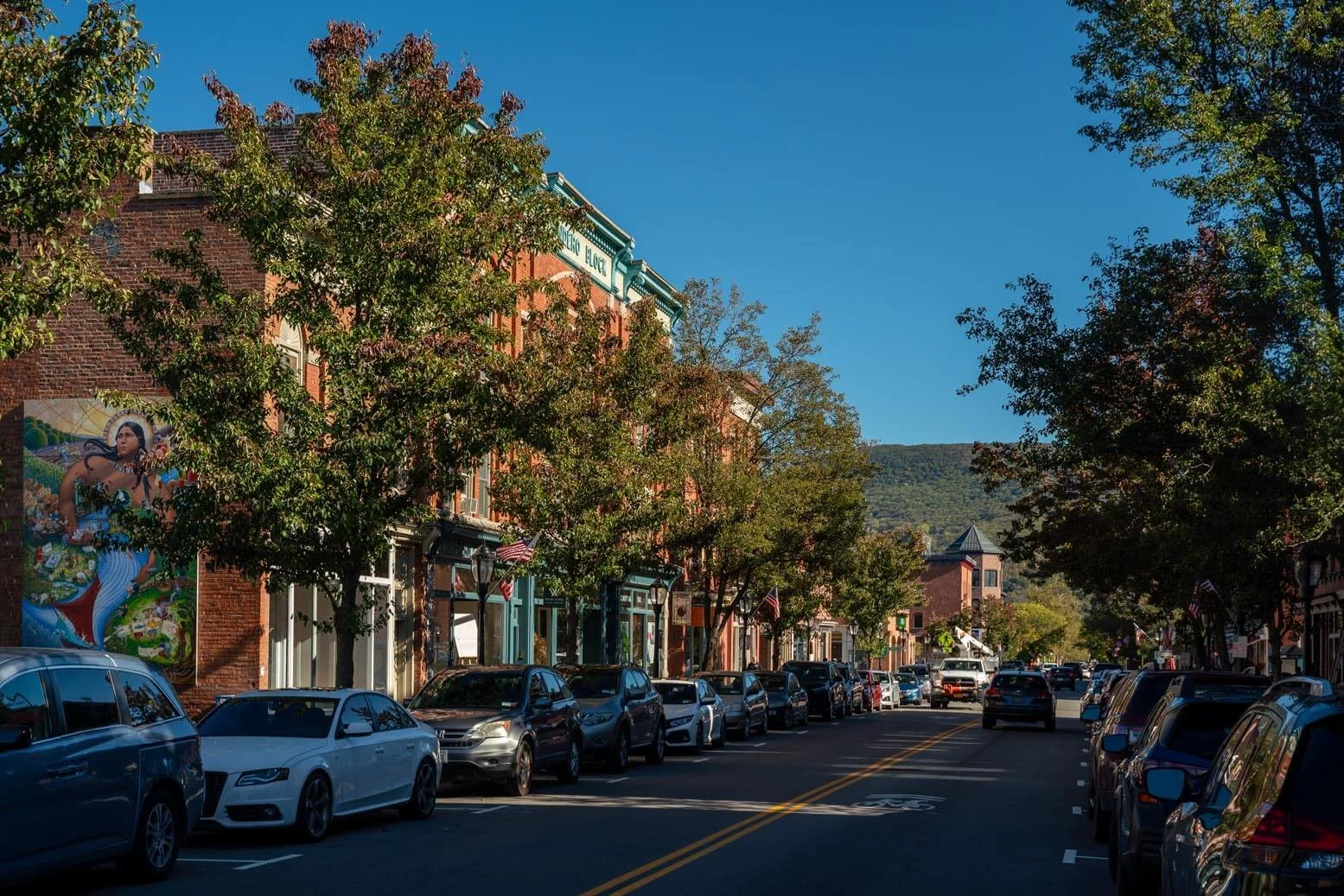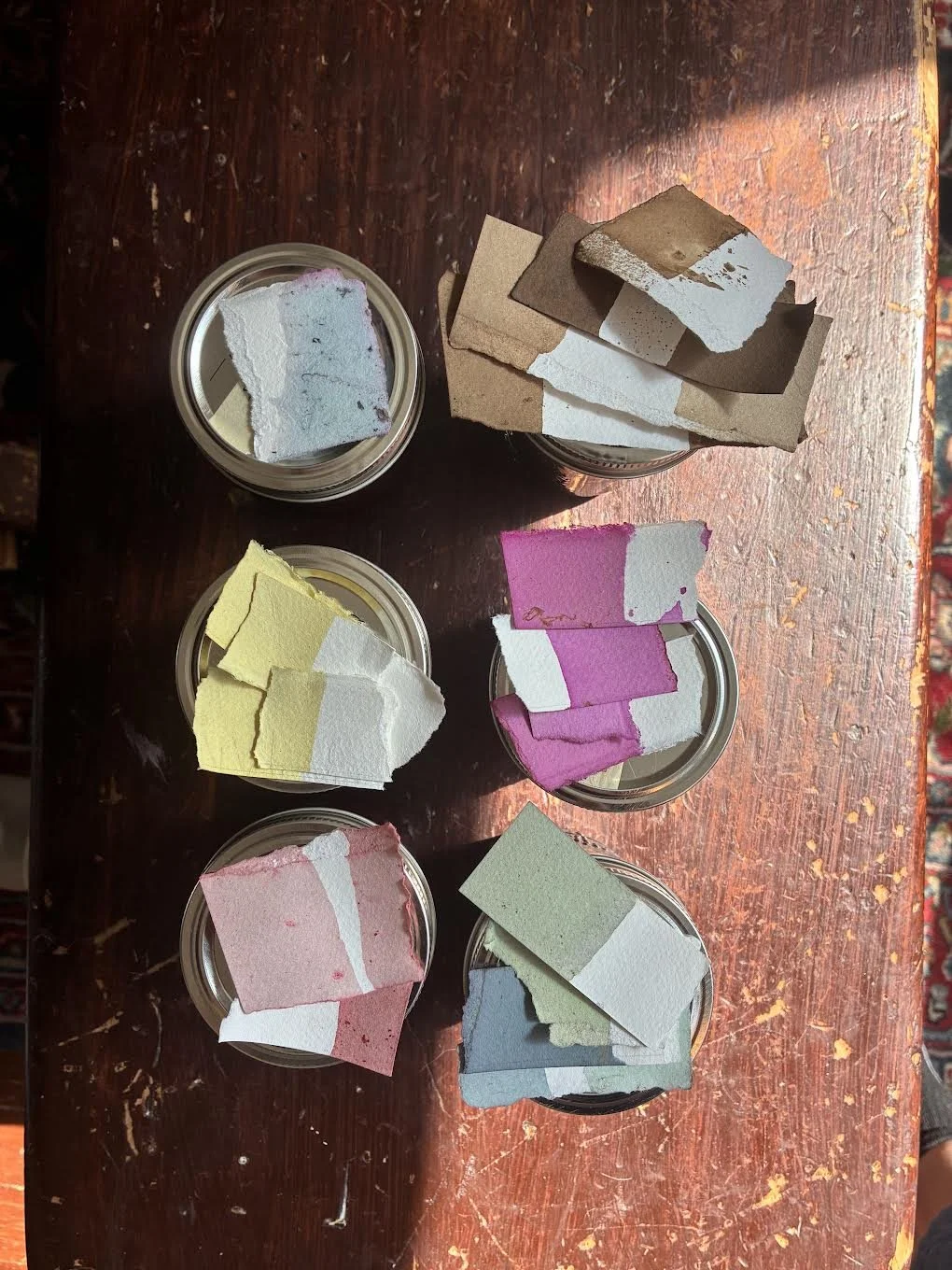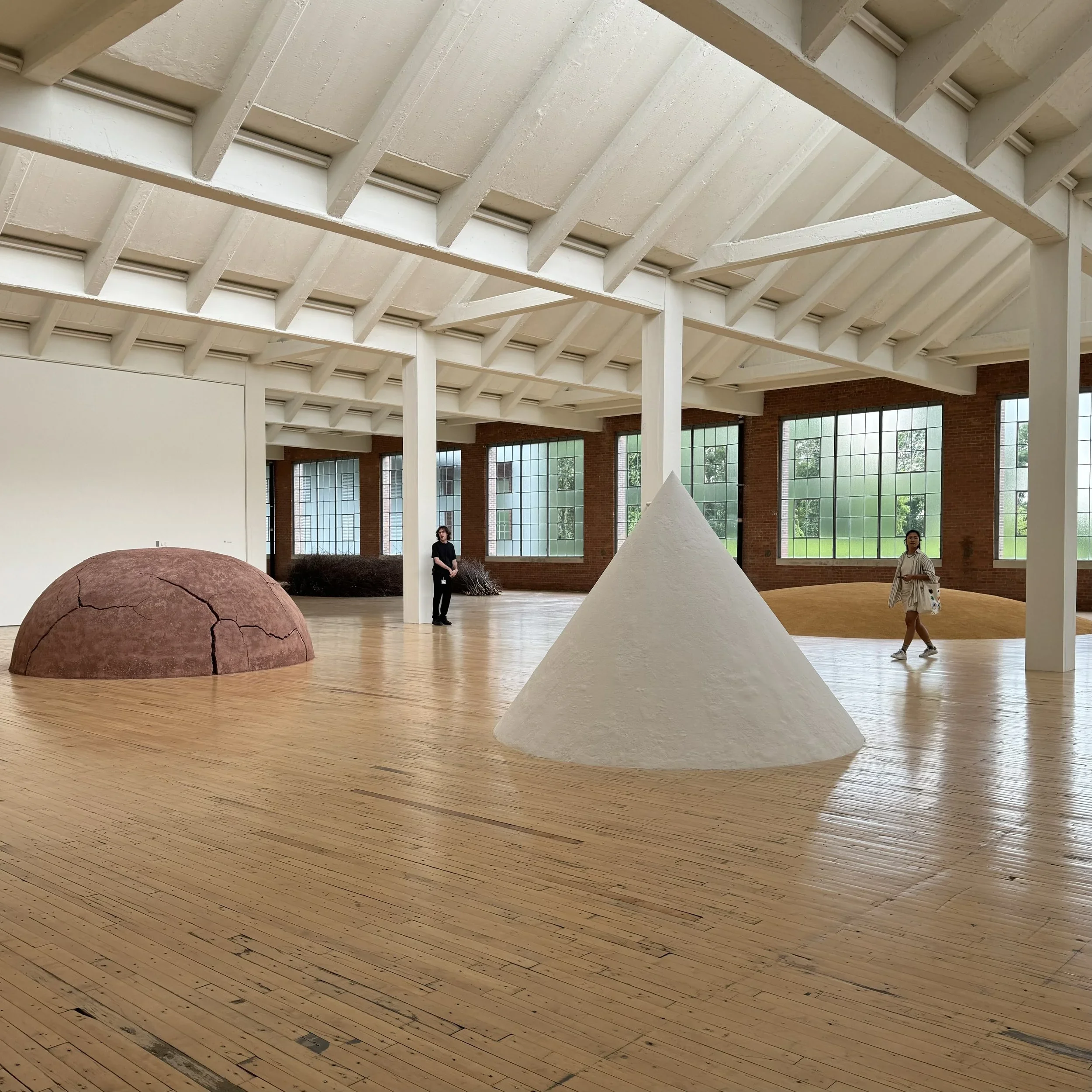Makers & Places: Alison Charli Smith in the Hudson Valley
A collaboration between Arte.Sana × Rural Tourism Network
Welcome to Makers & Places
We're excited to launch this bi-weekly series; a collaboration between Arte.Sana and Rural Tourism Network, which connects you with the artisans and landscapes in small-town America. Each issue introduces you to a maker whose craft is deeply rooted in place, along with a curated travel itinerary to experience their community firsthand.
We believe travel has the power to bridge rural and urban communities, creating meaningful connections that benefit both visitors and the places they explore. When you visit a small town, meet a local artisan, and support their craft, you're participating in a vital exchange that sustains rural economies and cultural traditions while enriching your own life with authentic experiences and handmade goods that carry real stories.
Our first few issues are dedicated to helping New Yorkers discover the incredible artisans working in nearby regions, all accessible by train or car for a day trip or weekend escape. Whether you're seeking authentic cultural experiences, handmade goods with a story, or simply a reprieve from city life, Makers & Places is your guide to discovering the people and places that make rural America extraordinary.
Key Points
The Maker: Alison Charli Smith, natural dye textile artist in Beacon, who forages local plants to create one-of-a-kind quilts and wall hangings
The Place: Beacon & Cold Spring, NY—90 minutes from NYC by train or car
Key Stops:
🏛️ Dia:Beacon (contemporary art museum in a former Nabisco factory)
☕ Big Mouth Coffee Roasters or Kitchen and Coffee
🛍️ Main Street shops: Super Secret Projects gallery, Kaight, Little King, Hunca Muncas
🚂 Train one stop north to Cold Spring (6 minutes)
🎨 Super Secret Projects & Studio Tashtego
🌳 Long Dock Park waterfront trails or Mount Beacon hiking
🥬 Beacon Farmers Market (Sundays year-round)
➡️ Interactive Map: See all locations mentioned in this issue on our map.
Introduction
Just over an hour north of Grand Central, Beacon unfolds along the eastern bank of the Hudson River, a small city that's become something of an art refuge. The Hudson Valley has always drawn artists, from the 19th-century painters who immortalized its dramatic landscapes to today's wave of creative professionals seeking reprieve from New York City's relentless pace. Here, former and current New Yorkers alike find space to breathe, to notice, to make things with their hands. The rhythm slows. The mind opens.
Beacon's revitalization tells this story in microcosm. The former industrial town's massive Nabisco factory now houses Dia:Beacon, one of the world's premier contemporary art museums, which has transformed the community's economy. Main Street, once sleepy, now hums with independent shops, galleries, and cafes. And in studios tucked throughout the community, makers like Alison Charli Smith have built practices deeply rooted in this landscape, where the changing seasons aren't just scenery, but source material. For Alison, a textile artist specializing in natural dyes, the plants growing along Beacon's streets, the berries ripening by the waterfront, and the shifting palette of the valley itself become the colors in her quilts and wall hangings.
The Maker's Story
Five years ago, Alison Charli Smith made the move that would transform her practice. Leaving behind the density of city life, she and her family settled in Beacon, seeking what she describes as "mental and physical space." What she found was something more profound: a creative partnership with the natural world.
“When we moved up to the Hudson Valley, I started trail running,” Alison reflects, “and I think that’s been one of the biggest things that’s influenced my practice; being outside, being in nature, being on the trails and seeing the tiny changes that occur week to week. Things are blooming, turning green, and if you really start to pay attention, all these really beautiful nuances are happening in nature throughout the seasons.”
That attention has become the foundation of her work. A self-taught sewist who's been making since childhood, Alison's path wound through the University of Vermont, where she studied photography and ceramics in Burlington's nature-oriented setting. But it was a growing unease with conventional dye processes that led her to discover her true calling. "I was dyeing fabrics with chemical dyes and feeling really terrible about the process, things that I was putting down the drain," she explains. Her first experiment with purple cabbage yielded a beautiful blue, which promptly washed away. Determined to understand the alchemy of making color permanent, she took a weekend intensive in natural dyeing at the Textile Arts Center in Brooklyn twelve years ago.
From that foundational knowledge, Alison has built a distinctive practice that bridges traditional craft with contemporary design. She creates custom quilts and wall hangings for interior designers and architects across the country, recently completing organic textile works using indigo for a Japanese restaurant in California. But whether she's working on a commission or her own fabric-by-the-yard line, her process remains rooted in place.
“The colors of the landscape here through all the seasons really heavily influence my work,” Alison says. “ Even the use of certain things for the dying process is seasonal”
Alison forages through Beacon's streets and waterfront, where native and invasive plants grow abundantly in yards and along sidewalks. It's this intimate knowledge of her local ecosystem, what's blooming when, what plants are emerging, what colors the season will yield, that makes each of her pieces irreproducible. They're not just textiles; they're botanical records of specific moments in the Hudson Valley.
The Craft Deep-Dive
Natural dyeing is one of humanity's oldest crafts, practiced for millennia before synthetic dyes arrived in the mid-1800s with their promise of consistency and vibrant, repeatable color. Once chemical dyes dominated, plant-based dyeing nearly disappeared from widespread practice. Now, as Alison notes, it's experiencing a resurgence: "I think as people are getting tired of fast fashion and consumerism and taking more of an interest in things that are handmade and small batched—more directly related to the person who made them—we're seeing a return to craft and appreciation of craft."
But natural dyeing isn't simply a matter of boiling plants and fabric together. The process requires knowledge, patience, and an understanding of how colors interact with fabric. Alison works exclusively with cotton and linen, using textiles that have been prepared for dye (meaning sizing and waxes are already removed). The fabric might be mordanted first, then immersed in dye baths made from foraged or cultivated plant materials, sometimes requiring multiple dips to achieve depth of color. Some colors need heat, others develop through fermentation or oxidation when exposed to air.
Each plant yields its own range of hues depending on the mordant used, the time of year it's harvested, even the pH of the water. Red cabbage can produce blues or purples. Goldenrod gives golds and greens. Black walnut hulls create everything from soft tan to deep chocolate brown.
“Alison describes her work as “one part art, one part science, one part magic,” and these elements work in tandem throughout the process. ”
"Natural dyeing isn't just putting plants in a pot with fabric and hoping for the best," she explains. "There are so many things that can affect the color a plant will produce, where the plant was foraged, at what time of year, the type of water used in a dye bath, the pH of the dye bath, the textile being dyed, if the fabric is prepared with a metal mordant or a tannin mordant." The science lies in these chemical reactions, especially when working with dyes like indigo. The magic emerges in the surprises that come from working with natural materials. And the art? "That's up to the artist—what someone does when they have a pile of naturally dyed fabrics in front of them and they can create anything they want."
This unpredictability is part of the beauty. Unlike synthetic dyes that deliver identical results batch after batch, natural dyes create unique variations, connecting each piece to a specific harvest, a particular season, an unrepeatable moment.
The revival of natural dyeing represents more than nostalgia. It's part of a broader movement toward sustainability, transparency in making, and reconnection with traditional knowledge. For Alison, who takes inspiration from folk art traditions—particularly the stenciling patterns popular in 1800s homes—the practice feels both ancient and urgent. After dyeing comes the construction: cutting, piecing, hand-quilting. The entire process, from foraged plant to finished textile, can span days or weeks. The result is work that carries the attention and intention of every step.
Visit This Place
The Metro-North Hudson Line makes Beacon and neighboring Cold Spring wonderfully accessible from Grand Central, an easy 90-minute train ride that follows the Hudson River north through increasingly dramatic scenery. If you're driving, take the Taconic State Parkway for arguably the prettiest route, about 75 miles through rolling hills and autumn foliage that inspired the Hudson River School painters. See all locations mentioned in this issue on our map.
Start Your Day at Dia:Beacon
Dia:Beacon
Make your first stop the town's crown jewel: Dia:Beacon, housed in a former Nabisco box-printing factory. This spectacular contemporary art museum offers over 240,000 square feet of gallery space with natural light flooding through skylights onto monumental works by Richard Serra, Donald Judd, Dan Flavin, and others. The building itself is a work of art, and wandering through these vast industrial spaces provides the perfect contemplative start to your day. Allow 2-3 hours. Open Friday through Monday, $15 admission.
Coffee & Main Street Exploration
Beacon's revitalized Main Street awaits with independent shops and cafes. Grab coffee at Big Mouth Coffee Roasters or Kitchen and Coffee; both local favorites offering excellent brews. Then lose yourself in the town's eclectic retail scene.
Don't miss Super Secret Projects, a small gallery tucked in the back of a clothing store that showcases local artists and occasionally hosts workshops. Kaight has been a Main Street pioneer for 15-20 years, carrying small-batch, sustainable, ethically-made clothing and goods. Little King offers the best selection of well-designed gifts and home goods, while Hunca Muncas is a tiny gem of a kids store carrying toys and items for children made by local and international artisans.
For lunch, grab comfort food at Beacon Daily (their egg sandwich with a side of tots is a local favorite) or Quinn's for excellent ramen. If you're visiting between March and October, don't miss Ron's for their legendary soft serve ice cream.
Head to Cold Spring
A quick 10-minute drive, 6-minute train ride on Metro-North (one stop south), or scenic 20-minute bike ride brings you to Cold Spring, a charming village right on the Hudson with even more concentrated small-town appeal. The train station drops you right at the foot of Main Street. If driving, park near the waterfront and stroll Main Street's antique shops, galleries, and boutiques.
Supplies for Creative Living is an exceptional art supply store carrying beautifully curated, well-made materials—the kind of shop that makes you want to start a new creative project immediately. Just up the street, Studio Tashtego is a design gallery featuring fine craft, including work by local artisans alongside national makers.
Dining & Lodging
For lunch, Cold Spring offers everything from casual cafes to riverside dining with Hudson views. The village is compact enough to wander and choose based on your mood. If you're planning an overnight stay, both towns offer charming B&Bs and small inns. Beacon's proximity to Dia makes it ideal for art-focused weekends, while Cold Spring's waterfront location appeals to those seeking a more village-like atmosphere.
Seasonal Considerations
The Hudson Valley shines year-round, but autumn (late September through October) brings spectacular foliage and harvest season energy. Spring (April-May) offers wildflowers and the valley emerging from winter dormancy—perfect for understanding what inspires Alison's seasonal dye palette. Summer weekends can be busy; consider visiting midweek for a quieter experience. Winter brings stark beauty and uncrowded museums, though some shops have reduced hours.
Nearby Attractions
Don't miss the Beacon Farmers Market on Sunday mornings year-round, voted best farmers market in the Hudson Valley for several years running. For outdoor experiences, visit Long Dock Park to enjoy Beacon's waterfront with gentle hiking trails through native plantings. Hiking Mount Beacon lives up to the hype with panoramic views, but if you want to escape the crowds, explore the trails at Stony Kill Farm instead.
Take It Home
Experience Alison's Work: Visit Alison's website at alisoncharlismith.com to shop her collection of naturally-dyed quilts, wall hangings, and fabric by the yard. Each piece is one-of-a-kind, carrying the colors of specific Hudson Valley seasons. Custom commissions are available for interior designers and individuals seeking bespoke textiles.
New to Natural Dyeing? If you're curious about starting your own natural dye practice, Alison recommends checking out The Handbook of Natural Plant Dyes by Sasha Duerr or Wild Color by Jenny Dean from your local library. For those ready to move beyond the basics, she highly recommends Liz Spencer (aka The Dogwood Dyer), calling her "one of the best natural dye educators"—her Year in Natural Dyes subscription is excellent for deepening your practice.
Follow Alison's Practice: Instagram: @alisoncharlismith
See behind-the-scenes glimpses of her dyeing process, foraged materials, and finished works—plus insight into what's currently blooming and being transformed into color in the Hudson Valley.
Support Local Craft: When you invest in naturally-dyed textiles, you're supporting slow craft, sustainable practices, and a maker who's deeply connected to their regional ecosystem. As Alison notes, this work offers a "different outlet for people to find mindfulness and meditation"—a quality that extends from the making to the living with these pieces.”
“Each quilt, each length of fabric carries attention, intention, and the irreplaceable beauty of color pulled directly from the earth.”
Next Issue: Coming in two weeks
Makers & Places is a collaboration newsletter series between Arte.Sana and Rural Tourism Network, connecting urban audiences with rural artisans and the places that inspire them.
Have thoughts about how place shapes creativity? Reply to this email or comment on the blog to continue the conversation.









